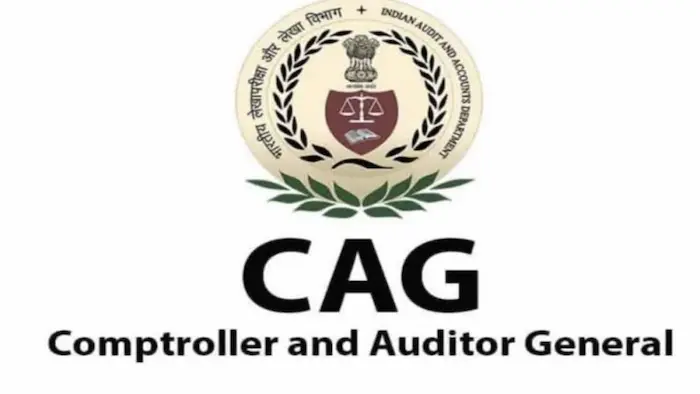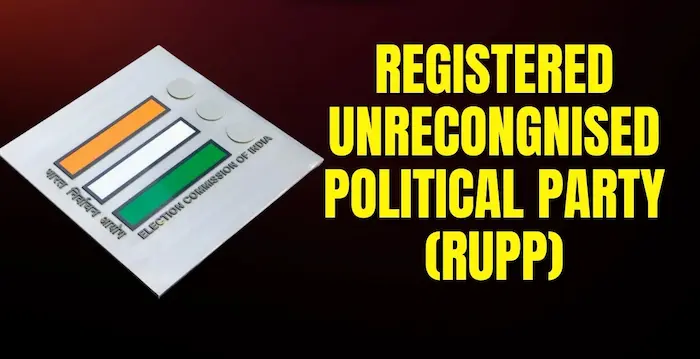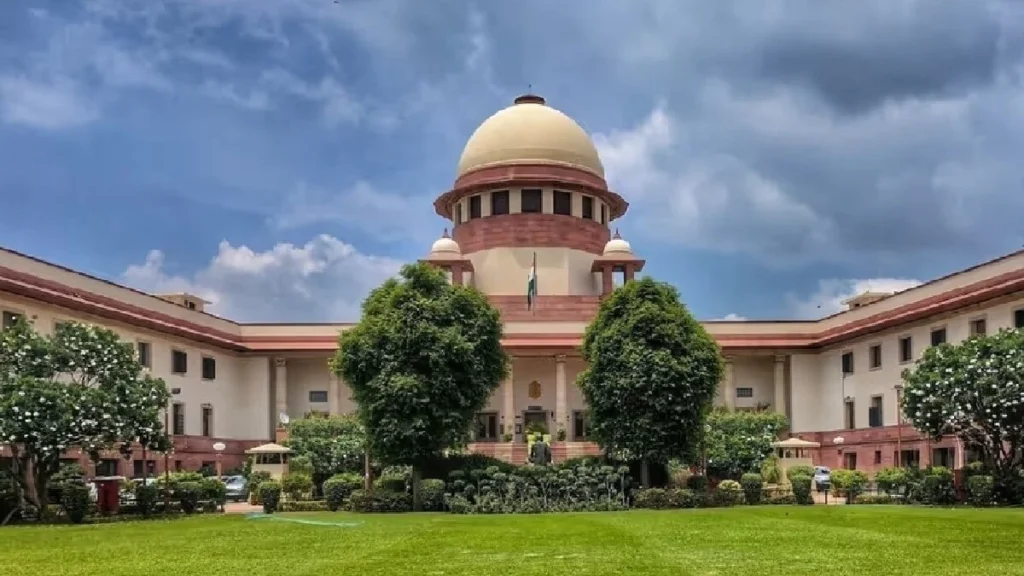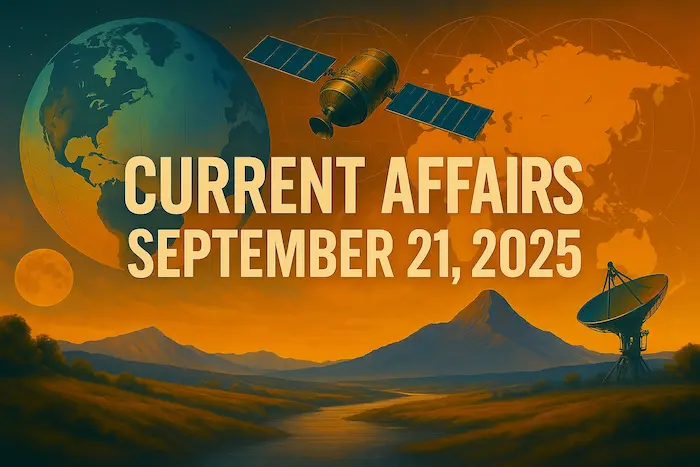1.Rising Public Debt of States – Insights from the CAG’s Decadal Report – Economy
Why in News?
The Comptroller and Auditor General of India (CAG) released a decadal report (2013–14 to 2022–23) evaluating the fiscal health of Indian states.
The report reveals a sharp rise in public debt and highlights growing fiscal risks, especially for some states.
Key Takeaways
| Aspect | Details |
|---|---|
| Public Debt Growth | Rose from ₹17.57 lakh crore (2013–14) to ₹59.60 lakh crore (2022–23) – a 3.39x increase |
| Debt-to-GSDP Ratio | Increased from 16.66% to 22.96% over the decade |
| Debt Sustainability Concerns | Debt as % of revenue receipts ranged between 128%–191%, indicating rising risks |
| Inter-State Variations | Punjab, Nagaland – Highest debt-to-GSDP; Odisha, Gujarat – Lowest |
| Sources of Debt | Market borrowings, bank loans, RBI loans, financial institutions, and union government |
Understanding Public Debt
Definition
Public debt = Borrowing by governments (Centre or State) when expenditure > revenue. It includes:
- Internal borrowings
- External loans
- Liabilities under the Consolidated Fund
Debt-to-GSDP Ratio
Measures a state’s ability to repay debt using its economic output.
NK Singh Committee (FRBM Review):
- Centre: Max 40% of GDP
- States: Max 20% of GSDP
Key Fiscal Risks Highlighted
| Issue | Explanation |
|---|---|
| High Debt States | 8 states have debt >30% of GSDP (as of March 31, 2023) |
| Revenue Pressures | High debt-to-revenue ratios (128%–191%) → risk of default or fiscal stress |
| Borrowing for Revenue Expenditure | Violates the “golden rule” that borrowing should fund capital expenditure, not salaries or subsidies |
| Macroeconomic Risks | Excessive debt can crowd out private investment and pressure credit ratings |
Policy Recommendations
| Suggestion | Rationale |
|---|---|
| Public Debt Management Agency (PDMA) | For transparent and professional debt management |
| Diversify Revenue Sources | Strengthen state-level tax bases (e.g., property tax, user fees) |
| Better Adherence to FRBM Act | Enforce fiscal discipline and transparency |
| Link Borrowing to Capital Spending | Prioritise investments in infrastructure and social services |
| Performance Auditing by CAG | Regular monitoring to ensure accountable fiscal behavior |
Implications for Governance & Economy
- Rising debt affects development spending and creditworthiness
- States may face reduced fiscal autonomy if debt is mismanaged
- Long-term sustainability needs structural reforms, not just budgetary adjustments
Exam Connect – Possible Questions
Prelims
1. According to the NK Singh Committee recommendations, the ideal debt-to-GSDP ratio for Indian states should not exceed:
A. 30%
B. 25%
C. 20%
D. 15%
Answer: C. 20%
2. Which of the following violates the “Golden Rule” of public finance?
A. Using borrowings for building highways
B. Borrowing to finance education infrastructure
C. Using loans to pay salaries and subsidies
D. Issuing bonds for building schools
Answer: C. Using loans to pay salaries and subsidies
Mains
1.The CAG’s recent decadal report highlights a steep rise in the public debt of Indian states. Discuss the key reasons for this trend and suggest policy measures to ensure debt sustainability without compromising developmental needs. (Word Limit: 250)
2.”Fiscal discipline is essential for cooperative federalism.” In light of the rising debt burden of states, analyse the role of institutions like the CAG, Finance Commission, and PDMA in ensuring sound fiscal management. (Word Limit: 250)
2. Process of Voter Name Deletion from the Electoral Roll: Legal Provisions and Systemic Vulnerabilities – Polity
Why in News?
In 2023, the Leader of Opposition in the Lok Sabha alleged that over 6,000 voter names were illegally deleted from the Aland constituency (Karnataka) using online forms, without the knowledge of the concerned voters.
The state CID has reportedly sent 18 letters to the Election Commission of India (ECI) over 18 months seeking information, but no response has been received yet.
Legal Framework for Voter Deletion
Representation of the People Act, 1950 – Section 22
- Allows Electoral Registration Officers (EROs) to:
- Correct errors in the electoral roll
- Delete names in cases of:
- Death
- Change of residence
- Ineligibility (e.g., underage, non-citizenship)
Registration of Electors Rules, 1960 – Rule 13
- Form 7: Used to object to the inclusion of a name or to request deletion
- Can be filed by:
- The voter themselves, or
- Another registered voter in the same constituency
Online Process of Filing Form 7
| Step | Details |
|---|---|
| Access | Available on eci.gov.in and ECINet App |
| Login | Must link phone number to EPIC number |
| Required Info | Applicant’s name, EPIC number, phone number, and details of the person to be deleted |
| Reason Selection | Choose from: Death, Underage, Shifted, Already Enrolled, Not a Citizen |
| Proof Requirement | No documents needed, only self-declaration |
| Submission | Can be submitted online or printed for submission to BLO |
Processing the Deletion Request
| Role | Responsibility |
|---|---|
| ERO/Asst. ERO | Receives application, issues notice to the elector, allows 7 days to respond, conducts hearing |
| BLO (Booth Level Officer) | Conducts field verification of the deletion claim |
| Decision | ERO makes a final decision after verification and hearing |
System Vulnerabilities & Concerns
Gaps in the System
- No mandatory proof required when filing Form 7
- No EPIC or phone number verification during application
- Potential for misuse:
- One person may use another’s EPIC with a different phone number
- Names may be removed without knowledge or consent of the affected person
Example: Aland Constituency Case
- Names of 6,018 voters allegedly deleted
- Forms reportedly submitted without local voters’ consent
- CID flagged the issue; ECI has yet to respond formally
ECI’s Response
- Acknowledged the vulnerability
- Emphasized that deletion cannot proceed without ERO and BLO inquiry
- Points to existing safeguards in decision-making, despite system flaws
Recommendations & Way Forward
| Suggestion | Purpose |
|---|---|
| Two-Factor Authentication | Prevent misuse of Form 7 submissions online |
| Document Requirement | Mandate minimal proof (e.g., death certificate, address change) |
| Audit Trails | Create trackable logs of who submitted deletion requests |
| Stronger ERO Oversight | Ensure robust field verification before name removal |
| ECI Accountability | Timely responses to queries from law enforcement agencies like CID |
Exam Connect – Possible Questions
Prelims
1. Under which legal provision can the Electoral Registration Officer delete names from the electoral roll?
A. Article 324 of the Constitution
B. Section 22 of the Representation of the People Act, 1950
C. Rule 49-O of Conduct of Election Rules
D. Section 8 of the Indian Penal Code
Answer: B. Section 22 of the Representation of the People Act, 1950
2. What is Form 7 used for in the context of voter registration?
A. To apply for a new voter ID
B. To update address in the voter list
C. To object to inclusion or request deletion of a name from the electoral roll
D. To register as a candidate
Answer: C. To object to inclusion or request deletion of a name from the electoral roll
Mains
1.”The integrity of the electoral roll is foundational to free and fair elections.” In light of recent allegations of unauthorized deletions, critically examine the safeguards and challenges in the voter deletion process in India. (Word Limit: 250)
2.Discuss the role of technology in managing electoral rolls in India. How can digital systems like ECINet be made more secure and accountable? Suggest reforms. (Word Limit: 250)
3.CAG Flags Fraud in State Schemes Using AI & Remote Auditing Tools – Governance

Why in News?
At the Second State Finance Secretaries Conference, CAG of India, K. Sanjay Murthy, revealed that AI and ML-based forensic audits have exposed multiple fraudulent activities in state-run beneficiary schemes.
This marks a shift towards technology-led auditing to enhance financial accountability in governance.
Key Highlights
| Focus Area | Details |
|---|---|
| AI & ML in Auditing | Used to identify fraud, duplication, and data manipulation in schemes |
| Impact | Potential to prevent major financial leakages and optimize state budgets |
| Remote Auditing | Applied in GST, e-Procurement, Stamp Duty, DBT, and Registration systems |
| Next Focus | Expand audits to ULBs and Panchayati Raj Institutions (PRIs) for deeper coverage |
Role of Digital Governance Platforms
IFMIS – Integrated Financial Management Information System
- Automates budgeting, accounting, reporting
- Integrates all financial functions under one system
WAMIS – Works and Accounts Management Information System
- Developed by C-DAC
- Tracks project finances from planning to execution (esp. in construction/public works)
GePNIC – Government e-Procurement System
- Developed by NIC
- Enables transparent, paperless tendering
DILRMP – Digital India Land Records Modernisation Programme
- Digitizes land ownership records, improves transparency in land transactions
Use of AI/ML in Forensic Audits – Examples & Benefits
| Use Case | Outcome |
|---|---|
| Duplicate beneficiaries in DBT schemes | Identified fake or multiple registrations using same IDs |
| Subsidy leakages | Flagged irregularities in fertilizer and PDS distribution |
| Ghost health claims | Detected false insurance claims under state health schemes |
| Tax Evasion Patterns | Traced inconsistencies in GST filings and e-way bills |
Challenges
- Uneven digital maturity across states → Some lack capacity for AI-driven audits
- Data quality and integration issues hinder full automation
- Resistance from lower bureaucracy and local power centers in adopting AI-based transparency tools
Way Forward
| Recommendation | Purpose |
|---|---|
| Upskill audit staff in AI & Data Analytics | Improve institutional readiness |
| Adopt uniform digital accounting standards | Enable comparability across states |
| Audit ULBs & PRIs | Increase local-level financial transparency |
| Strengthen feedback loops | Ensure that audit findings lead to corrective action |
| Central data repositories | For smoother inter-departmental audits |
Role of the CAG in Governance
- Constitutional authority under Article 148–151
- Ensures accountability in public expenditure
- Increasingly moving towards tech-led remote and real-time audits
Exam Connect – Possible Questions
Prelims
1. Which of the following digital platforms is used by the Government of India for e-Procurement?
A. GePNIC
B. IFMIS
C. DILRMP
D. PRAGATI
Answer: A. GePNIC
2. The Works and Accounts Management Information System (WAMIS) has been developed by:
A. NITI Aayog
B. Ministry of Finance
C. C-DAC
D. NIC
Answer: C. C-DAC
Mains
1.“The use of Artificial Intelligence and Machine Learning in auditing state schemes can revolutionize public accountability.” Critically examine the benefits and challenges of AI-based audits in India’s governance system. (Word Limit: 250)
2.Discuss the role of the CAG in ensuring financial transparency in state welfare schemes. How can digital platforms enhance the effectiveness of audits in decentralized institutions like ULBs and PRIs? (Word Limit: 250)
4. Registered Unrecognised Political Parties (RUPPs) and Electoral Reforms – Polity

Why in News?
The Election Commission of India (ECI) has de-listed 474 Registered Unrecognised Political Parties (RUPPs) for failing to contest elections in the past six years.
This is part of a broader initiative to streamline the electoral ecosystem and eliminate dormant political entities.
Key Highlights
| Focus Area | Details |
|---|---|
| Action Taken | 474 RUPPs delisted by ECI in 2025 |
| Reason | Non-participation in elections for 6+ years |
| Objective | Clean-up of inactive parties, reduce voter confusion, and enhance transparency |
| Legal Basis | Section 29A of the Representation of the People Act, 1951 governs registration |
What Are RUPPs?
Registered Unrecognised Political Parties (RUPPs) are:
- Political parties registered with the Election Commission
- But not recognised as either State or National parties due to insufficient electoral performance
Privileges of RUPPs
- Common poll symbol (temporary) under the Symbols Order, 1968
- Tax exemption under Section 13A of the Income Tax Act, 1961
- Can nominate star campaigners
Obligations of RUPPs
- Must contest elections regularly
- Submit:
- Annual audit reports
- Contribution reports
- Disclosure of donations above ₹20,000
- No cash donations over ₹2,000 permitted
Legal Provisions & Judicial Interpretation
| Provision / Case | Implication |
|---|---|
| Section 29A, RPA 1951 | Governs registration of political parties |
| SC in INC vs Institute of Social Welfare (2002) | ECI cannot de-register parties but can delist them (removes privileges, but not legal status) |
| Delisting | ECI can withdraw benefits, but party remains legally registered unless proven fraudulent or anti-Constitutional |
Concerns with RUPPs
- Many exist only on paper
- Misuse of tax benefits without meaningful political participation
- Overcrowded ballot papers create voter confusion
- Undermines the credibility of electoral rolls
Recognised Political Parties: Criteria and Benefits
National Parties – Criteria
Must meet any one of the following:
- 6% of valid votes in 4+ states in Lok Sabha/Assembly + 4 Lok Sabha seats
- Win 2% of Lok Sabha seats from 3+ states
- Recognition as a State Party in 4+ states
State Parties – Criteria
Must meet any one of:
- 6% valid votes in Assembly election + 2 Assembly seats
- 6% valid votes in Lok Sabha election + 1 Lok Sabha seat
- 3% of total Assembly seats (minimum 3)
- Win 1 Lok Sabha seat per 25 seats allocated to that state
Privileges of Recognised Parties
- Reserved symbols
- Free electoral rolls
- Broadcast time on TV and radio
- Consultation rights with ECI on electoral reforms
Way Forward
| Reform Needed | Rationale |
|---|---|
| Legal power to de-register parties | Currently missing; only delisting possible |
| Regular audits of compliance | Ensure active engagement and financial transparency |
| Stricter scrutiny at registration | Avoid inflating the number of dormant political outfits |
| Public disclosure of contributions | Improve trust in electoral funding mechanisms |
Exam Connect – Possible Questions
Prelims
1. Which of the following statements regarding Registered Unrecognised Political Parties (RUPPs) is correct?
A. They enjoy reserved election symbols.
B. They are not required to disclose funding.
C. They are eligible for tax exemptions under the Income Tax Act.
D. They must contest elections only once in ten years.
Answer: C. They are eligible for tax exemptions under the Income Tax Act.
2. Under which legal provision are political parties registered with the Election Commission of India?
A. Article 324 of the Constitution
B. Section 29A of the Representation of the People Act, 1951
C. Section 13A of the Income Tax Act, 1961
D. Representation of the People Act, 1950
Answer: B. Section 29A of the Representation of the People Act, 1951
Mains
1.The delisting of inactive political parties by the Election Commission is a necessary step toward electoral reform. Examine the legal limitations and suggest mechanisms to strengthen transparency in the functioning of political parties. (Word Limit: 250)
.Distinguish between recognised and unrecognised political parties in India. What are the privileges enjoyed by recognised parties, and how can inactive RUPPs undermine the democratic process? (Word Limit: 250)
5. Supreme Court Cites the Preamble to Uphold Secularism – Polity

Why in News?
The Supreme Court of India recently dismissed a plea challenging the inauguration of the Mysuru Dasara festival by a religious leader, stating that the event was a state function and not a religious endorsement.
The Court invoked the Preamble of the Constitution, reinforcing the foundational principles of secularism, liberty, equality, and fraternity.
Key Highlights
| Aspect | Details |
|---|---|
| Issue | Petition filed against religious inauguration of a state event (Dasara Festival, Karnataka) |
| SC Ruling | Inauguration does not violate secularism; state remains neutral |
| Constitutional Reference | Preamble cited to uphold secular values |
| Core Principles Emphasised | Secularism, Liberty, Equality, Fraternity – key to national unity |
Legal & Constitutional Basis
The Preamble to the Constitution
- Introduced in 1946 via the Objectives Resolution (by Jawaharlal Nehru)
- Adopted in 1947, enacted with the Constitution in 1950
- 42nd Constitutional Amendment Act, 1976 added:
- “Socialist” and “Secular” to the Preamble
Judicial Interpretation of the Preamble
| Case | Significance |
|---|---|
| Berubari Union Case (1960) | Initially ruled that the Preamble is not part of the Constitution |
| Kesavananda Bharati (1973) | Overruled Berubari; held that the Preamble is part of the Constitution and reflects its Basic Structure |
| S.R. Bommai (1994) | Secularism is a basic feature; state must not identify with or favor any religion |
| R.C. Poudyal (1994) | Equal treatment of religions was upheld even before the word “secular” was inserted |
| Dr. Balram Singh v. UOI (2024) | State can regulate religious practices if they conflict with equality or development |
| LIC of India Case (1995) | Preamble is non-justiciable but integral to constitutional interpretation |
What is Secularism in the Indian Context?
| Feature | Explanation |
|---|---|
| Equal Respect to All Religions | No state religion; state must maintain religious neutrality |
| Positive Secularism | State can regulate religion to ensure public order, morality, health |
| Part of Basic Structure | Cannot be amended or diluted, even by Parliament |
Significance of the Ruling
- Upholds the symbolic and philosophical authority of the Preamble
- Clarifies that cultural events like Dasara, even if opened by religious leaders, do not compromise the secular character of the state
- Prevents the misuse of secularism as a political tool, while still safeguarding religious neutrality
Exam Connect – Possible Questions
Prelims
1. Which Constitutional Amendment added the words “Socialist” and “Secular” to the Preamble?
A. 40th Amendment
B. 42nd Amendment
C. 44th Amendment
D. 52nd Amendment
Answer: B. 42nd Amendment
2. In which case did the Supreme Court first hold the Preamble to be part of the Constitution?
A. Berubari Union Case (1960)
B. Golaknath Case (1967)
C. Kesavananda Bharati Case (1973)
D. Minerva Mills Case (1980)
Answer: C. Kesavananda Bharati Case (1973)
Mains
1.Discuss the role of the Preamble in guiding constitutional interpretation in India. How has the judiciary used the Preamble to reinforce the principle of secularism? (Word Limit: 250)
2.In light of recent Supreme Court judgments, critically examine how secularism is interpreted in India’s legal and constitutional framework. Is Indian secularism better described as ‘neutral’ or ‘equidistant’? (Word Limit: 250)
6. Gaganyaan Analog Experiments (Gyanex) – India’s Space Mission Readiness- Science and Technology

Why in News?
The Indian Space Research Organisation (ISRO), in collaboration with the ICMR and the Institute of Aerospace Medicine (IAM), is conducting Gyanex (Gaganyaan Analog Experiments) to prepare astronauts for the upcoming Gaganyaan human spaceflight mission, scheduled for 2027.
Key Highlights
| Parameter | Details |
|---|---|
| Nature | Ground-based analog simulations for astronaut training |
| Focus | Space medicine, astronaut psychology, communication, and mission protocols |
| Participants | Gaganyaan astronauts and defense personnel |
| Location | ISRO facilities & IAM, Bengaluru |
| Supplies | Space food developed by DRDO |
| Realism | Simulated communication delays and resource constraints |
Objectives of Gyanex
- Develop India’s first space medicine protocols
- Simulate astronaut behavior under confinement and isolation
- Study biomedical, psychological, and communication responses
- Lay groundwork for future missions: space stations, lunar habitats, and interplanetary travel
Gyanex-1 (First Experiment)
| Feature | Detail |
|---|---|
| Lead Astronaut | Group Captain Angad Pratap (IAF) |
| Duration | 10-day confinement |
| Experiments Conducted | 11 in total: focused on psychology, physiology, and inter-personal communication |
| Microgravity Simulation | 7-day 6° head-tilt bed rest used to mimic effects of weightlessness |
| Operations | Space-like schedules, resource limitation, communication lags |
Other Indian Analog Missions
| Mission | Description |
|---|---|
| Ladakh Human Analog Mission (Nov 2024) | Simulated survival in cold, barren, Mars-like terrain |
| HOPE Habitat at Tso Kar (Aug 2025) | Deployed 8m habitat & 5m utility module in harsh Mars-like conditions: low pressure, high UV, saline permafrost |
About the Gaganyaan Mission
- Crewed Mission: 3 astronauts
- Objective: Low Earth Orbit (LEO) for 3 days
- Splashdown: In the Arabian Sea
- Status (as of Sept 2025):
- Development completion: 80–85%
- Avionics, environmental control, and crew safety systems under validation
- Mission expected to launch by 2027
Significance
| Benefit | Explanation |
|---|---|
| Health & Safety | Prepares astronauts for physiological and psychological challenges of space |
| Indigenous Capacity | Reduces reliance on foreign agencies for astronaut training |
| Future Missions | Critical for India’s plans for space stations, Moon bases, and Mars missions |
| Global Standing | Establishes India as a serious contender in human space exploration |
Exam Connect – Possible Questions
Prelims
1. The Gyanex experiments are primarily associated with which Indian space mission?
A. Chandrayaan-3
B. Aditya-L1
C. Gaganyaan
D. Mangalyaan-2
Answer: C. Gaganyaan
2. What is the method used to simulate microgravity in the Gyanex analog experiments?
A. High-altitude balloon experiments
B. Parabolic flight training
C. 6° head-tilt bed rest
D. Underwater neutral buoyancy simulation
Answer: C. 6° head-tilt bed rest
Mains
1.Discuss the significance of analog experiments like Gyanex in preparing for human space missions. How do such simulations contribute to space medicine and mission safety? (Word Limit: 250)
2.India’s upcoming Gaganyaan mission marks a critical step in human spaceflight capability. Evaluate the importance of interdisciplinary collaboration in ensuring its success. (Word Limit: 250)

